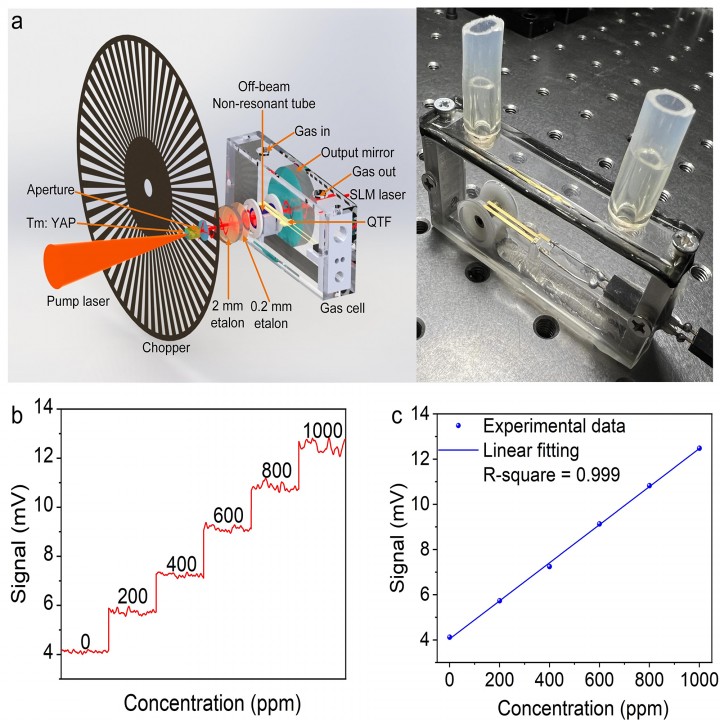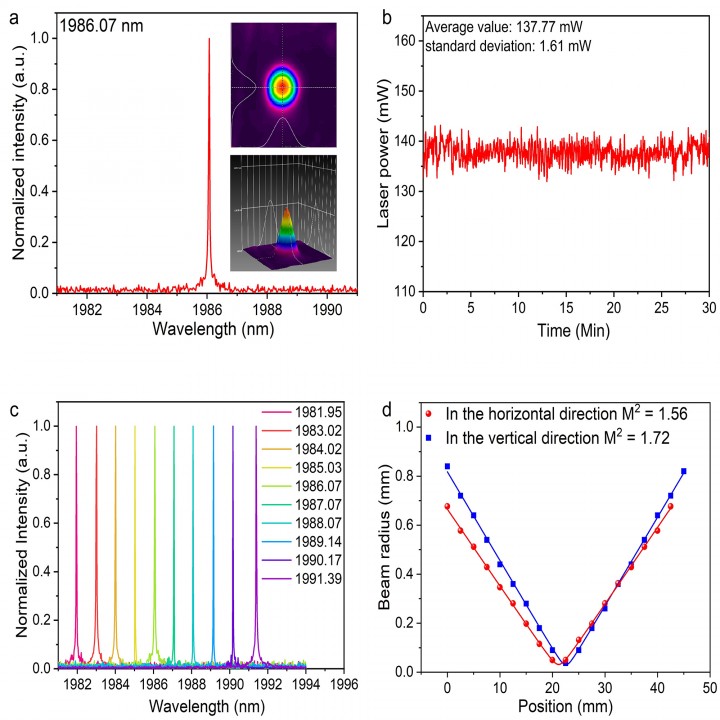The research team led by Professor Yufei Ma from the School of Astronautics at Harbin Institute of Technology has realized ultra-highly sensitive dual-component gases detection based on photoacoustic spectroscopy using a new type excitation source. The related research results were published in the scientific journal of Light: Science & Applications, with the title of Ultra-Highly Sensitive Dual Gases Detection Based on Photoacoustic Spectroscopy by Exploiting A Long-Wave, High-Power, Wide-Tunable, Single-Longitudinal-Mode Solid-State Laser.
Photoacoustic spectroscopy (PAS) is a laser absorption spectroscopy-based gas sensing technology that has the advantages of good gas selectivity, high detection sensitivity, and fast response speed. It has important application value in fields such as environmental monitoring, fire warning, and medical diagnosis. The excitation source, as the core component of the sensor system, plays a decisive role in the detection performance of the system. To achieve high-sensitivity detection of multi-component gases, laser absorption spectroscopy gas sensing technology urgently needs an ideal excitation source with long emission wavelength, high output power, wide tuning range, and good beam quality.
The research team led by Professor Yufei Ma started from the core component of the sensor system - the excitation source, and designed and built a tunable single-longitudinal-mode solid-state laser at 2-micron wavelength band. The output power of the single-longitudinal-mode laser is about 140 milliwatts, and it has a wide wavelength tuning range of 9.44 nanometers. Based on this, they designed photoacoustic spectroscopy sensor systems and realized high-sensitivity detection of water molecules and ammonia dual-component gases. In addition, the research team utilized the openness of the solid-state laser resonant cavity and used a novel low-frequency quartz tuning fork as the detection element to design an intracavity quartz-enhanced photoacoustic spectroscopy sensor system. By placing the tuning fork detection unit inside the laser resonant cavity, the system integration is improved while utilizing the high power density in the cavity. Compared with the common external cavity systems, the gas detection sensitivity is increased by up to 5.5 times. According to the concentration measurement results, the systems have excellent concentration linear response.



Paper Link: https://doi.org/10.1038/s41377-024-01459-5


